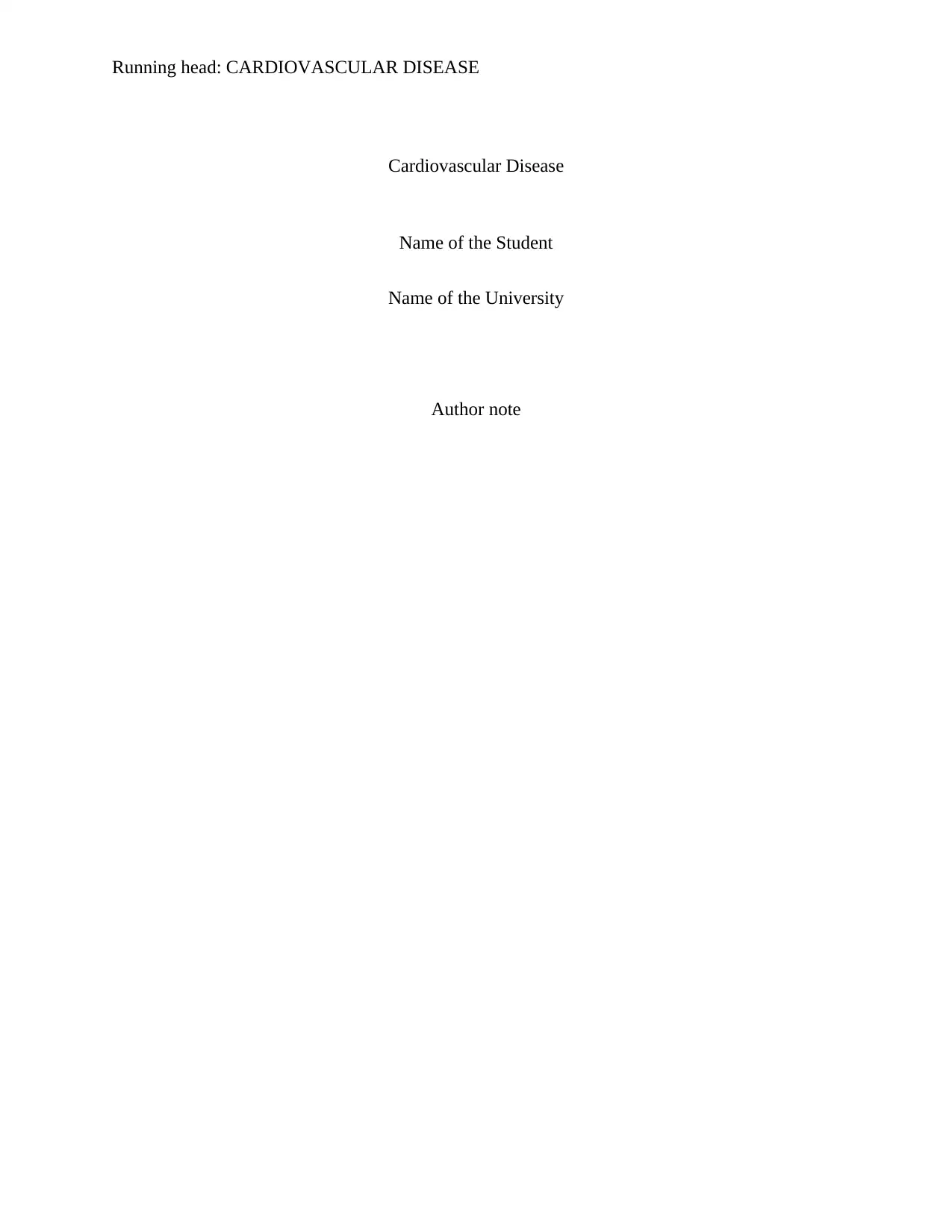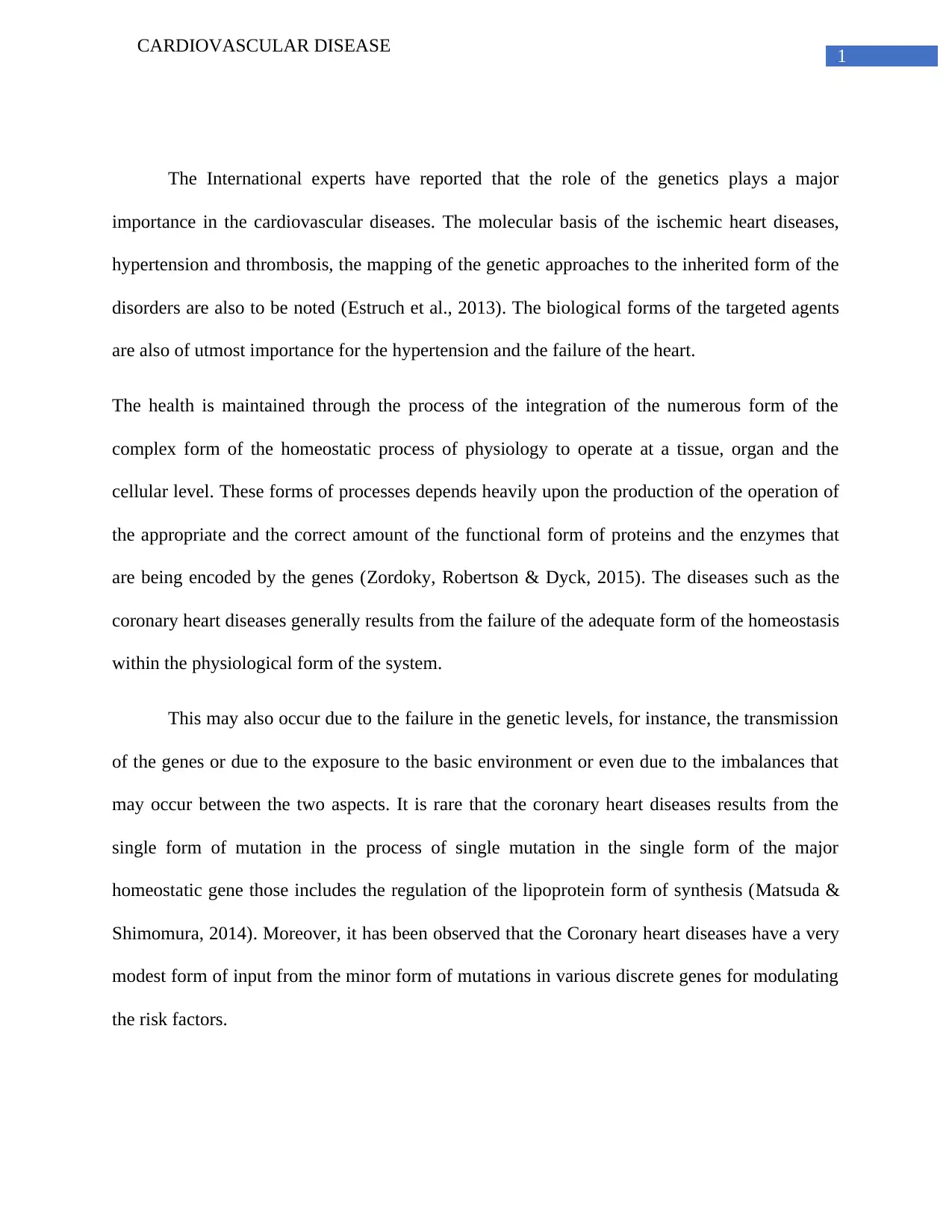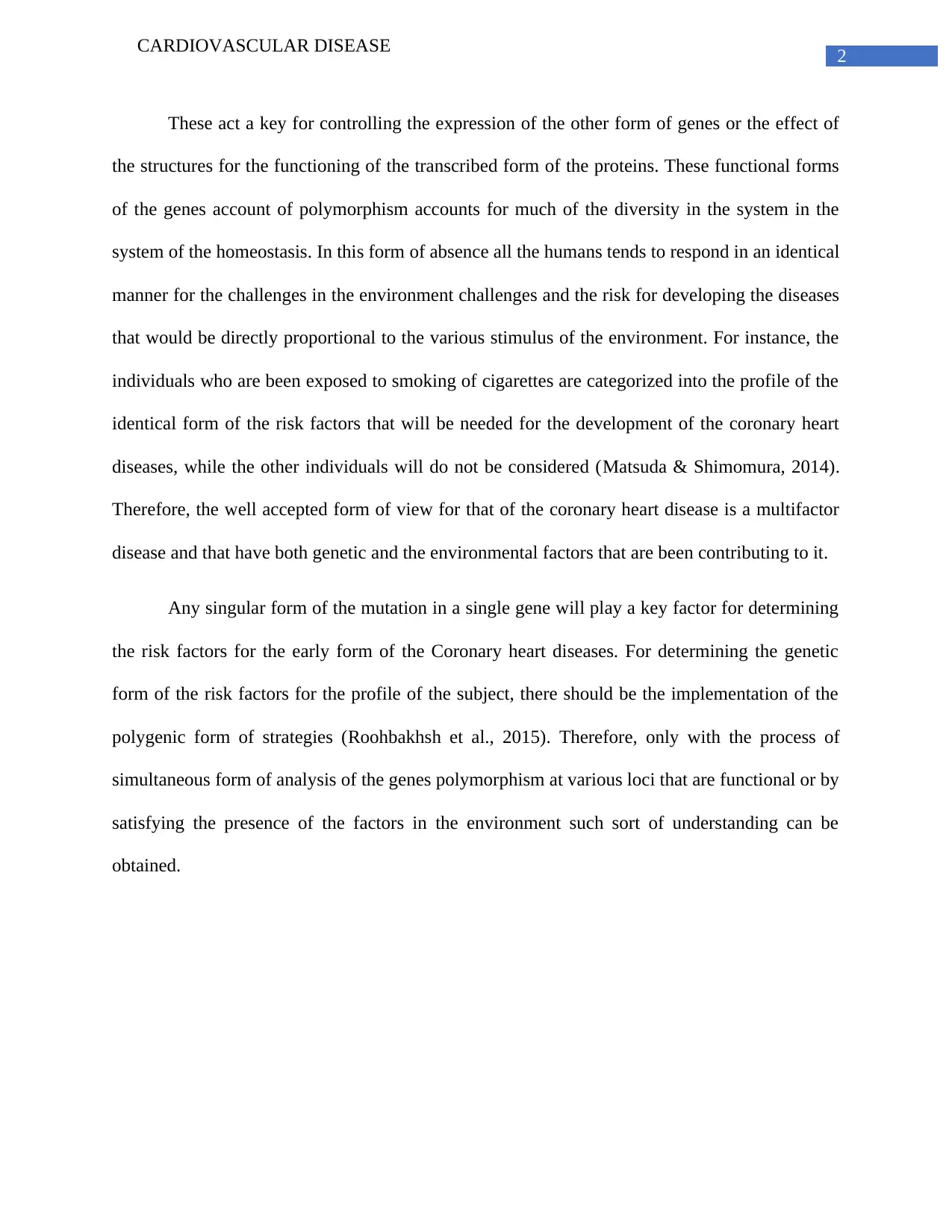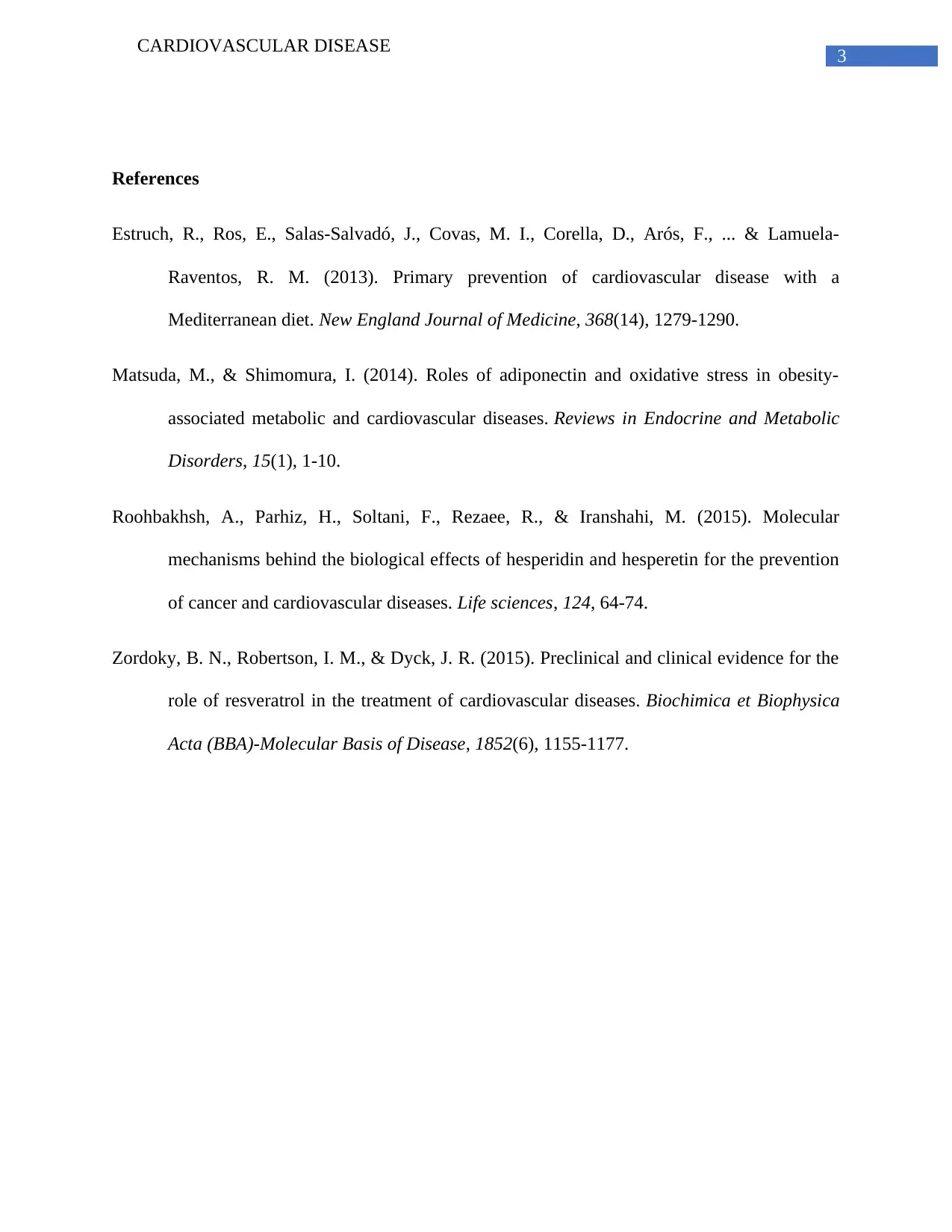Cardiovascular Disease: Genetic, Environmental, and Homeostasis
VerifiedAdded on 2020/04/07
|4
|833
|95
Essay
AI Summary
This essay delves into the multifaceted nature of cardiovascular disease, emphasizing the significant role of genetics alongside environmental factors. It highlights the importance of understanding the molecular basis of diseases like ischemic heart disease and hypertension, and the application of genetic approaches to inherited disorders. The essay underscores the crucial role of homeostasis and the function of proteins and enzymes encoded by genes. It explains how failures in homeostasis, whether at the genetic or environmental level, can lead to coronary heart disease. Furthermore, it discusses the concept of coronary heart disease as a multifactorial condition influenced by both genetic and environmental factors, and the need for polygenic strategies to determine genetic risk factors. The analysis also touches upon the impact of environmental factors, such as smoking, on disease risk, and concludes by reinforcing the view of cardiovascular disease as a complex interplay of genetic and environmental elements.
1 out of 4









![[object Object]](/_next/static/media/star-bottom.7253800d.svg)